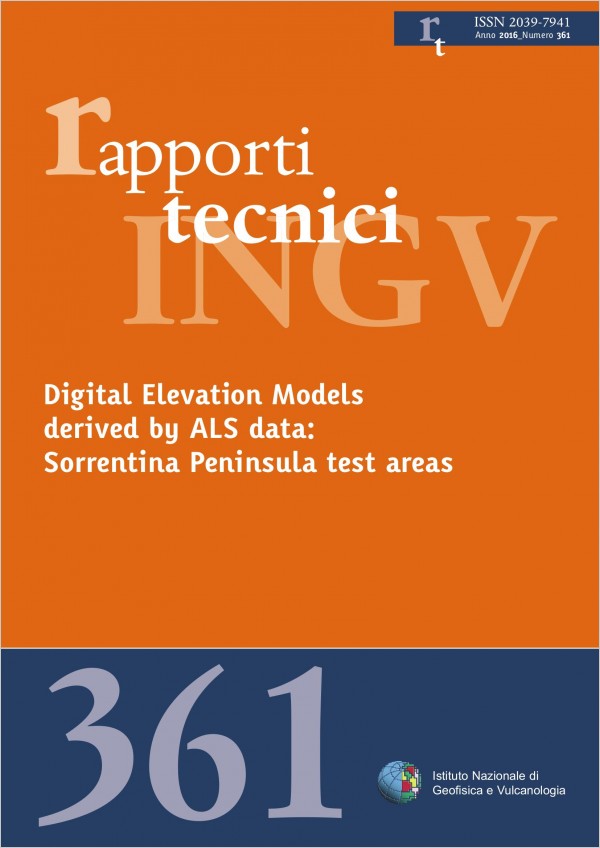Digital Elevation Models derived by ALS data: Sorrentina Peninsula test areas
Main Article Content
Abstract
The digital representation of the Earth surface is essential in any disciplines of the Geosciences. An accurate mapping of the Earth's surface at different scales is considered a prerequisite for modeling natural phenomena as water flow, mass movement, structural and tectonic deformations. For instance, in the geomorphological context, the availability of accurate digital topography improves the knowledge of structural elements and tectonic alignments [e.g. Azzaro et al., 2012], allows to better define the source areas of landslides [e.g. Bisson et al., 2013] and to reconstruct a detailed drainage network [e.g. Ozdemir and Bird 2009]. In the volcanological context, the topography becomes fundamental in order to map the invasion areas of lava flows [e.g. Felpeto et al., 2001; Tarquini and Favalli 2010], pyroclastic flows [e.g. Esposti Ongaro et al., 2008] and volcanoclastic debris flows and lahar [e.g. Muñoz-Salinas et al., 2009]. Also, in the hydrogeological studies, an accurate topography allows to reconstruct the surface of glaciers [e.g. Arnold et al., 2006], the relative changes in thickness during the time, and to identify areas invaded by possible flood or overflows of rivers [e.g. Khuat Duy et al., 2010]. Terrain models reproduce the variation of terrain elevation through a continuous surface by interpolating a large amount of 3D points georeferenced into a specific cartographic system [Li et al., 2004]. In detail, Earth digital models can be classified in three typologies: the Digital Elevation Model (DEM), the Digital Terrain Model (DTM), and the Digital Surface Models (DSM). The DEM derives from the processing of bare soil elevation (ground). The DTM includes the ground elevations and natural features such as the levee of rivers, the boundary of the lakes, the edge of a crater, and many others. The DSM is the restitution of the landscape based on heights of bare soil, vegetation and anthropic features. The elevation data of the terrain can be acquired by using the traditional method based on digitalization of raster cartography combined with GPS survey or more recently through remote sensing techniques such as the Light Detection and Ranging (LiDAR) technology. The models can be stored in two digital formats: TIN (Triangulated Irregular Network) and Raster. The first is a vector model represented by a network of triangles where each point has an elevation, the second is a numeric matrix where the elevation is stored in each cell. The resolution of the spatial model is defined by the density of input points in case of TIN format and by the cell size in case of Raster format. In this technical report the high-resolution DEMs of two municipalities of the Sorrentina Peninsula (Naples and Salerno provinces, Southern Italy) obtained after processing Airborne LiDAR data, are presented. The two above-mentioned municipalities represent two test areas corresponding to the Amalfi/Conca dei Marini and Castellammare di Stabia municipalities respectively. The availability of highresolution DEMs represents one of the key elements for morphometric analyses useful for landslide hazard investigation [Bisson et al., 2013]. The hazard investigation in Peninsula Sorrentina is the aim of the LCC project [Spinetti et al., 2016].
Article Details
Issue
Section
Article

This work is licensed under a Creative Commons Attribution 4.0 International License.

